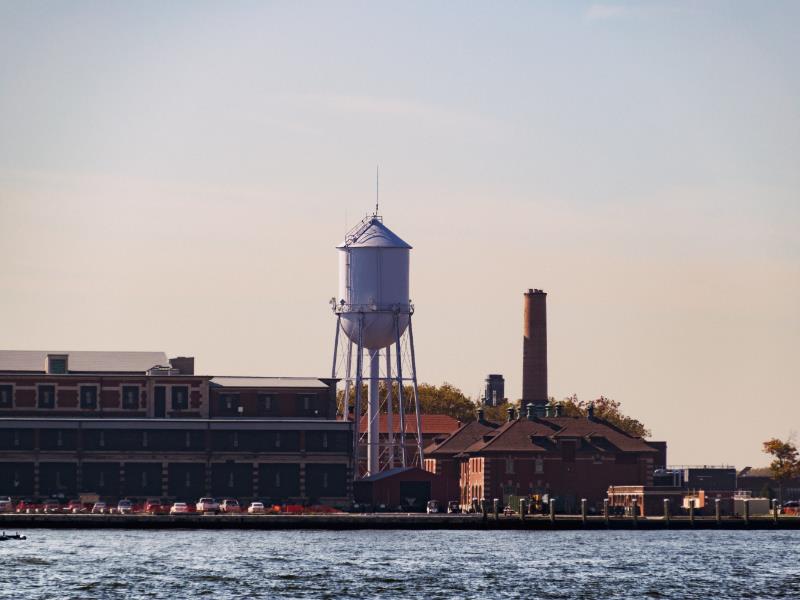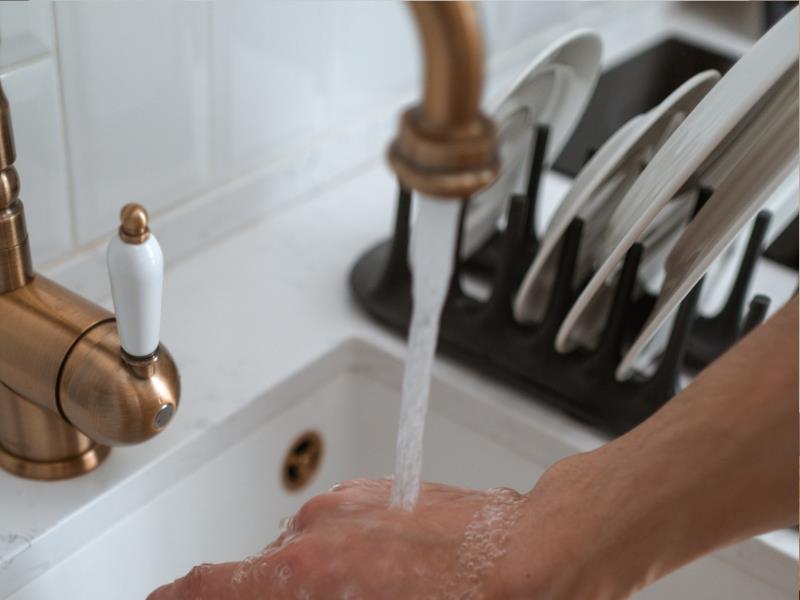Water Pressure
Home / Wiki / Water PressureLast updated Wed 29 Dec 2021
Effective plumbing has relied on a range of principles throughout history, from manual labour right through to complex electric pumps. Today, however, most homes don't rely on complicated electrical systems to receive water; instead, home plumbing near-exclusively utilises water pressure to transport water.
Water Pressure In Home Plumbing
Modern plumbing in developed countries utilises a fairly complex series of pipes, pumps, tanks, and valves to deliver water from one place to another, most of which rely on the basic principle of water pressure. In fact, the majority of residential plumbing mostly relies on a combination of water pressure and gravity to deliver and remove water from around the home, with pumps being reserved for applications that require significantly more water to be moved at once, such as a dam.

An example of a water tank, which uses gravity to create water pressure
Since residential plumbing relies on maintaining water pressure, however, that does mean that internal plumbing systems need to be largely watertight. Not only can small leaks result in the plumbing systems failing to function entirely, but the amount of pressure contained in plumbing pipes can tear through and cause severe damage to the surrounding property, which is best avoided where possible.
What Is Water Pressure?
Water pressure is the force used to transfer water through any space. In most plumbing systems, water pressure is created by height, with water reservoirs (be they dams, tanks, or otherwise) being constructed significantly above the area in which the water will be distributed. Gravity will then act upon the water, which creates force and, consequently, water pressure. Where the elevation is uneven, some areas might require booster pumps to increase the pressure while others will need a pressure-reducing station to decrease the water pressure, but either way, gravity is the main force driving water into your home.
It's also possible for water pressure to transport water vertically, though it will do so at some cost to the overall pressure of the system. If highly-pressurised water reaches a ninety (90) degree angle in a pipe, the water would like to continue to travel via the path of least resistance. The walls of the piping are made of sturdy materials, and they would require quite a bit of force to break open. Moving backwards against the flow of the water would also require quite a bit of force which typically isn't possible since colliding with the wall at the ninety-degree angle is going to rob the water of force, not increase it. Finally, moving up to occupy the space above the angle only requires the water to overcome the force of gravity, and is typically the easiest option for the water. This system of water pressure is how you can access running water on the second floor of a home even when the home's connection to the water main is buried beneath the property.

Another example of a water tank, which provides water to the local buildings
How Did It Work In The Past?
Before modern tools and sealed piping, plumbing systems needed to be designed to be operated without high amounts of water pressure, which typically meant manual labour would be required. Wells and dams were built and serviced by hand, and early humans would access and transport this water by manual methods, such as buckets and vases.
An excellent early example of the application of water pressure is the Roman aqueducts. The great Roman aqueducts typically relied on gravity to feed water from one location to another, though they generally only allowed the water to trickle down open-faced paths rather than forcing it to become pressurised inside of sealed pipes. As an exception, the Romans created highly-pressurised pipes to transfer water from one side of the aqueduct to another if it needed to pass through an immovable object, such as a mountain or hill, but creating these pipes by hand was difficult, as they needed to be largely watertight.

The resultant water pressure is used to provide water to homes
Today, plumbers have the technology necessary to create watertight plumbing systems on-site. They don't need to make considerations for figurative mountains in the way of the plumbing layout of your home in advance, they don't need to custom-order parts, and they generally don't need to worry about altering any existing plumbing systems to maintain pressure. With the tools available to modern plumbers, installing residential and commercial plumbing has become as simple as responding to an immediate need.
Catherine McLeod
20 Jun 2025
Verified
The service we received was fantastic. The boys were friendly to deal with and did a brilliant job and it was quick and efficient. They did everything possible to assist us with our new hot water syst... more
Ryn
13 Jun 2025
Verified
This is the third time we have gone with Aptus, and for good reason. Tyler and his off aider did an amazing job installing our garden pump and removing an old solar heart off our roof. The installatio... more
Isaac Kirsch
13 Jun 2025
Verified
Aptus were prompt, efficient and professional. During a new retaining wall construction I uncovered the house water main feed. Called several plumbers but Aptus were the only ones able to come out sam... more

We happily service all areas of Brisbane and beyond. Get in touch today.
And enjoy peace of mind with a dedicated team on call 24/7
